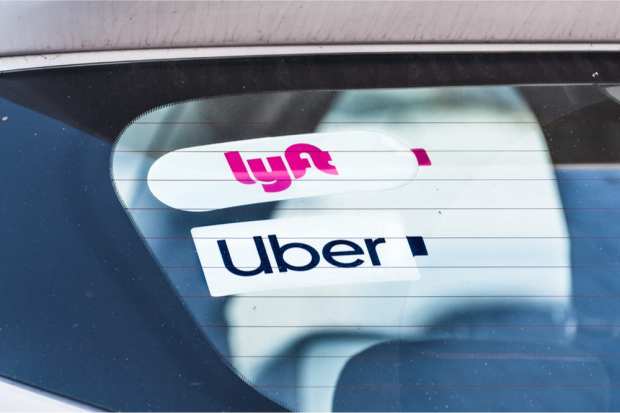AB 5 Heads To Court And The Battle Over Ridesharing Drivers Intensifies In California

Assembly Bill 5, the 2019 California legislation that moved to force gig economy firms — most notably Uber and Lyft — to reclassify their workers as employees as opposed to independent contractors has had its first hearing in front of California’s 1st District Court of Appeal as the two competing ridesharing firms work jointly to overturn a lower court ruling. That earlier ruling found both firms were required under the new legislation to reclassify their workers.
In their oral arguments during the Tuesday (Oct. 13) hearing, the two firms presented their case that a forced shift to employment for their workers would cause “irreparable harm” to both the ridesharing business and their drivers’ professional lives. They further argued against the reclassification of such a large share of their workforce as a result of an injunction they said was “premature.”
“Uber would have to turn into a different company,” argued the firm’s attorney, Theodore J. Boutrous Jr. “That is a drastic thing to order.”
Meanwhile, Lyft attorney Rohit K. Singla argued the legislature’s action was not (as has often been reported) targeted at Uber and Lyft specifically, and that AB 5 as written ought not to apply to either company. Uber made a similar argument — but to do so it interestingly sought to underline some of the difference between the two companies’ policies. Those differences include changes Uber has made to allow drivers (within some restrictions) to set their own pricing and to allow riders to request specific drivers for rides.
The appellate panel, however, had some tough questions for the ridesharing firms, starting with concern about the wages drivers can earn and whether or not ridesharing firms are essentially scooting past minimum wage requirements. Deputy attorney for San Francisco Matthew Goldberg said that although there are workers out there willing to accept less than the minimum wage, such actions are banned in California to protect against the downward pressure on wages overall. It was an argument that seemed to carry some weight with the judges, who had some sharp questions on the subject as to whether withholding workers’ wages counted as “irreparable harm” to them.
“Are you suggesting that the specter of thousands of individual claims for back wages is something that is insignificant and something that need not be considered in balancing the appropriateness of an injunction at this point?” Justice Stuart R. Pollak asked.
Judges also pointed out for the all the flexibility Uber claims to have inserted into the app to help make drivers more akin to truly independent contractors, it is still setting the base price for services that all drivers have to start from.
Uber and Lyft counter argued that there isn’t proof of drivers making less than the minimum wage on their platforms.
The court appearance is part of Uber and Lyft’s multi-pronged assault on AB 5 and its effects, which both argue seem to be designed to be destructive to the gig economy as a whole. It is not, incidentally, an argument they are alone in making against the California law, which has drawn wide criticism since it was signed into law in 2019 for what critics cite as inconsistency, confusing elements and ill-disguised purpose.
“It’s clear that AB 5 is essentially an assault on app-based, on-demand tech companies. It is replete with exceptions for much of the traditional gig economy — for instance, it’s for people selling Tupperware part-time, but not for someone dropping off meals for a restaurant delivery app,” Karen Webster wrote in a recent commentary on the dangers of reflexively demonizing Big Tech.
Moreover, Uber CEO Dara Khosrowshahi wrote in a blog post, if the point of AB 5 is to protect workers, it seems strange that its biggest and most lasting effect is going to be dumping a massive number of ridesharing drivers of them out of their paying jobs, at just about the worst moment in economic history. As of today, he noted, Uber employs about 1.7 million drivers nationwide. In a world where AB 5 as the law of the land, he noted, and all those drivers have to be full-time or part time employees — three quarters of their current workforce would have to go.
“According to our research, if Uber instead employed drivers, we would have only 260,000 available full-time roles — and therefore 926,000 drivers would no longer be able to work on Uber going forward. In other words, two-thirds of people currently driving with Uber would be denied their ability to work,” wrote Khosrowshahi.
Khosrowshahi noted he doesn’t deny the employment model for gig workers doesn’t need improvement, it does. But that fitting a new economic model into an old categorization system isn’t a way to get there — it’s a way to make it harder to get there.
“Instead of eliminating opportunity for nearly a million people, we should endeavor to improve the benefits and protections for gig workers. Their success, supported by a stronger safety net, would help bolster our nation’s economy,” he wrote.
And while Uber and Lyft’s battles in court are ongoing, the courts are not to be the only front in the ridesharing firm’s battle to block AB 5. The firms are also heavily backing Proposition 22, a ballot initiative scheduled to come before California voters in November’s general election. Prop 22 is designed to formally codify workers’ status as independent contractors in a law in such a way that would overrule AB 5 and that would require a seven-eighths legislative supermajority to overturn.
